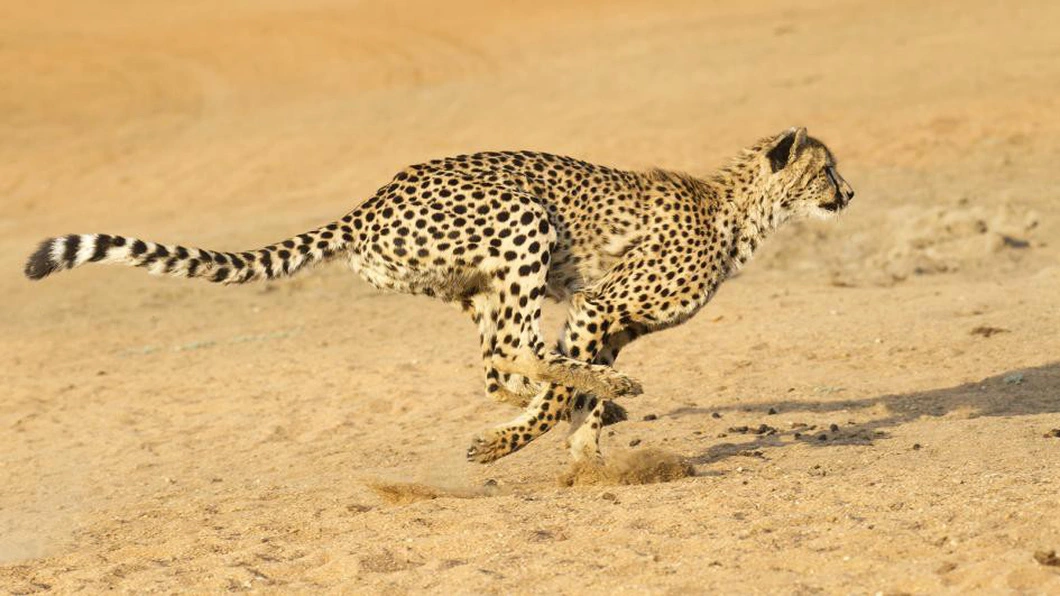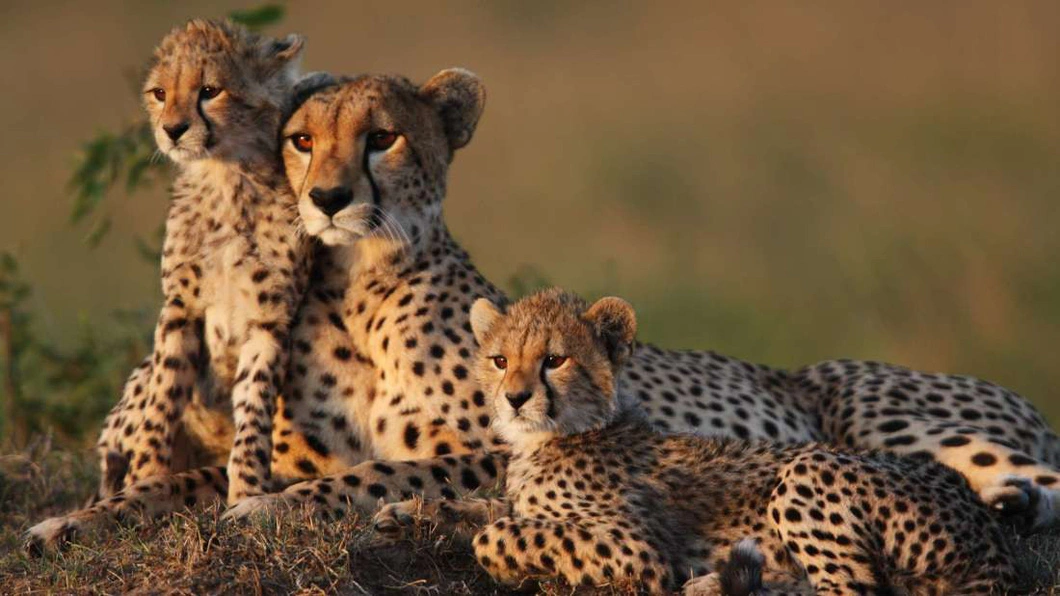The Most Terrifying Predator on Land

The cheetah, scientifically known as Acinonyx jubatus, is a species of big cat and is known as the fastest land animal on Earth, reaching speeds of up to 112 km/h.
These magnificent creatures have a sleek body covered in scattered black spots on a brown coat. They also boast two distinctive black “tear marks” on their faces, running from their eyes to their mouths.

With a streamlined body shape, long legs, and a flexible spine, cheetahs can sprint at incredible speeds, making them the most formidable predators on land, according to the Smithsonian Conservation Biology Institute (SCBI).
Cheetahs can accelerate from 0 to 72 km/h in just 2.5 seconds, rivaling sports cars that take 3.5 seconds to reach 97 km/h.
Their agility is astonishing, even mid-air, thanks to their long tails that help balance their body weight.
Fully grown cheetahs have an average height of 77 cm (at the shoulder), a length of 112-142 cm, and weigh between 34-64 kg. In the wild, they typically live up to 12 years, but in captivity, their lifespan can extend to 17 years.
Females tend to be solitary, while males often form groups with other siblings. Females only interact with males during mating, after which they raise their cubs alone.
Cheetah pregnancies last about three months, and each litter usually consists of three to five cubs. When the cubs are about six months old, the mother starts teaching them hunting skills and how to avoid other predators like lions and hyenas.
Despite their mother’s teachings, about 70% of cheetah cubs fall victim to predators like lions and hyenas.
The cheetah’s spotted coat allows them to blend into their surroundings while stalking prey or hiding from potential threats.
Mother cheetahs will stay with their cubs for about 18 months before parting ways. The cubs will continue living together for another 6-8 months, after which the females will leave to live on their own.
While males often bond in groups of 2-3 to protect their territory, females tend to stay in the area where their mother is and follow the migration path of their prey, primarily gazelles.
Cheetahs mainly prey on small to medium-sized animals such as gazelles, hares, impalas, wild pigs, and birds.
Their hunting activity peaks during dusk and dawn, and they spend a lot of time stalking their prey before launching an attack. After a successful hunt, they often hide their kill to avoid attracting vultures and hyenas.
Unlike other big cats like lions, tigers, and leopards, cheetahs can’t roar but communicate with a diverse range of vocalizations, sounding more like domestic cats.
Cheetahs have adapted to various habitats, including dry tropical forests, savannas, grasslands, and deserts in Africa and a small population in Iran. However, they are currently listed as a vulnerable species on the IUCN Red List of Threatened Species. Their populations have significantly decreased, with estimates of fewer than 7,000 individuals.
Threats to cheetahs include habitat loss, human impact, and illegal poaching and hunting.
The cheetah’s presence spans across Africa, mainly in northern regions, the Sahel (the border between the Sahara desert in the north and vast grasslands in the south), and a few in Iran.
Currently, they have become extinct in at least 13 countries, losing about 90% of their original habitat. The largest population of cheetahs, approximately 2,500 individuals, can be found in Namibia.
The decline in cheetah numbers is related to issues such as habitat loss, human intervention, and the illegal wildlife trade and hunting, as highlighted by the African Wildlife Foundation (AWF).






